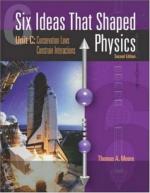|
This section contains 4,593 words (approx. 16 pages at 300 words per page) |

|
 Table 1. Energy, Ozone Benefits, and Avoided Peak Power of Cooler Roofs, Pavements, and Trees in Los Angeles Basin NOTE: The present value and surcost data for surfaces are calculated for 100 m2 of roof or pavement area, and for one tree. SOURCE: Rosenfeld et al., 1998.
Table 1. Energy, Ozone Benefits, and Avoided Peak Power of Cooler Roofs, Pavements, and Trees in Los Angeles Basin NOTE: The present value and surcost data for surfaces are calculated for 100 m2 of roof or pavement area, and for one tree. SOURCE: Rosenfeld et al., 1998.
Introduction
The earliest energy theorists were largely physical scientists, some of whom held that the growth and increasing complexity of society were largely synonymous with "progress," construed as a movement toward the higher, the better, and the more desirable. Nobel laureate chemist Wilhelm Ostwald (1907) was of this camp, although other eminent scholars such as the Nobel laureate physicist Fredrich Soddy (1912) and Alfred Lotka (1925), a founder of mathematical biology, also ventured ideas on the relation of energy and evolution yet made no explicit connection.
Energy theorists of cultural evolution are concerned with the whole sweep of cultural evolution, from...
|
This section contains 4,593 words (approx. 16 pages at 300 words per page) |

|


